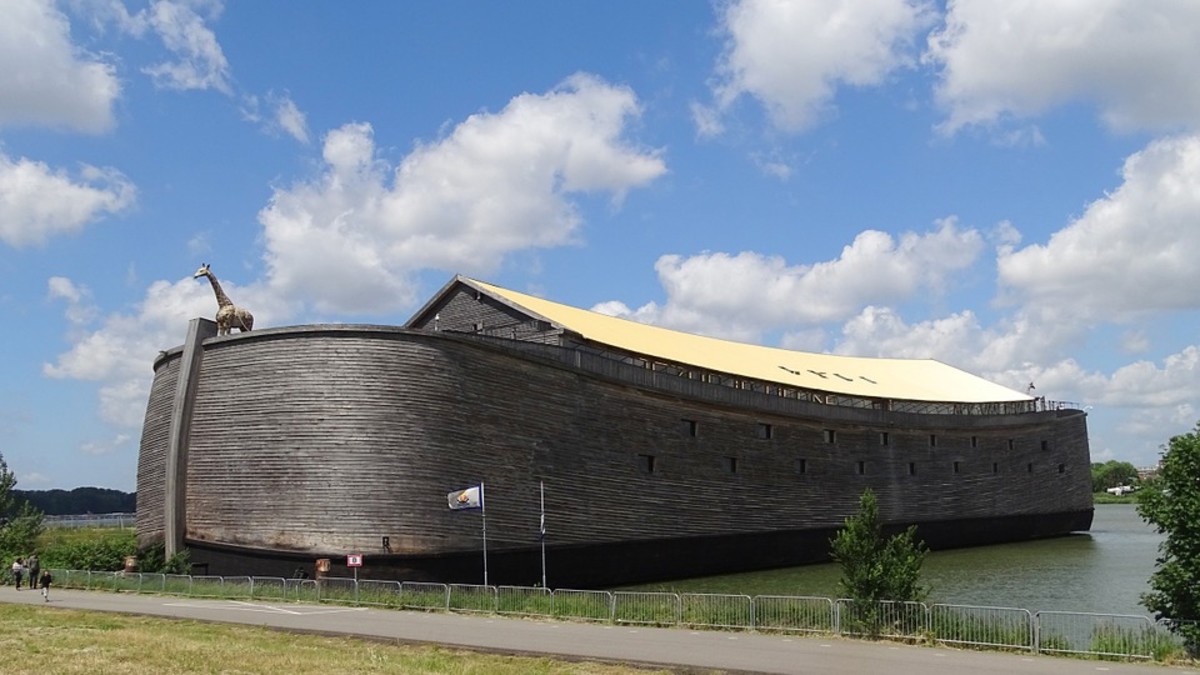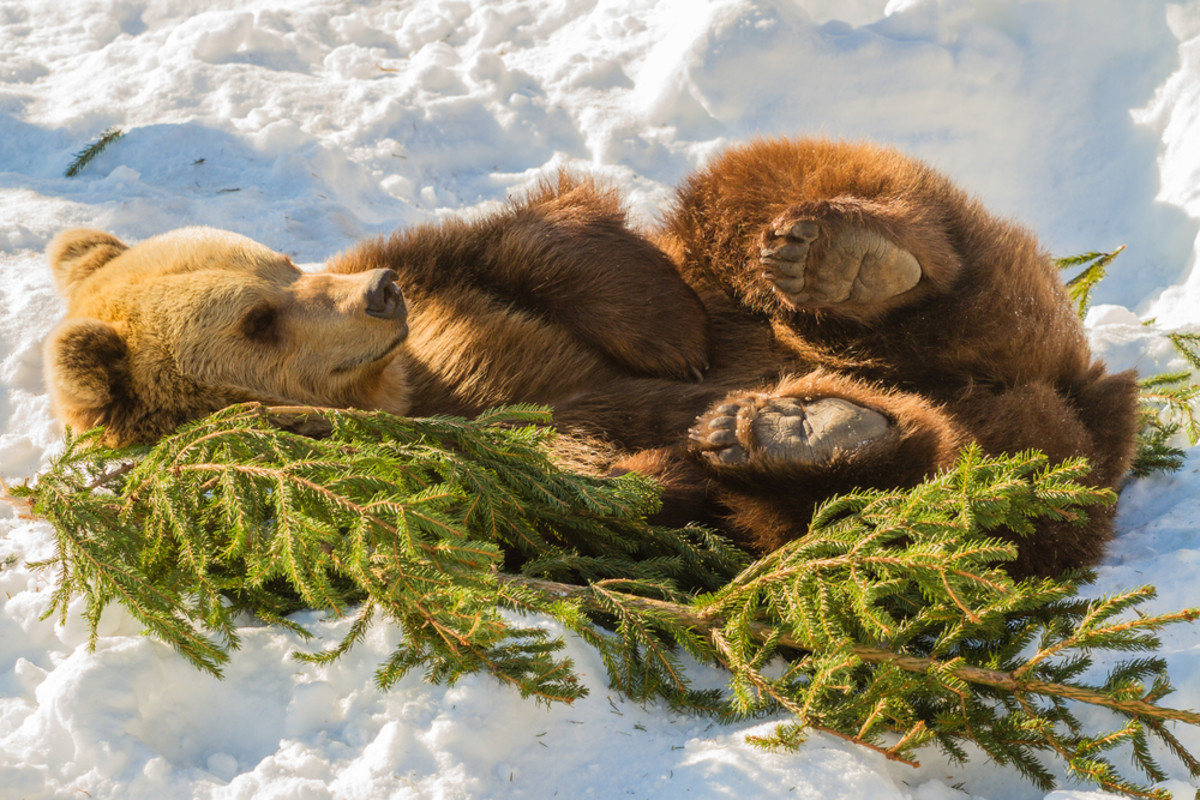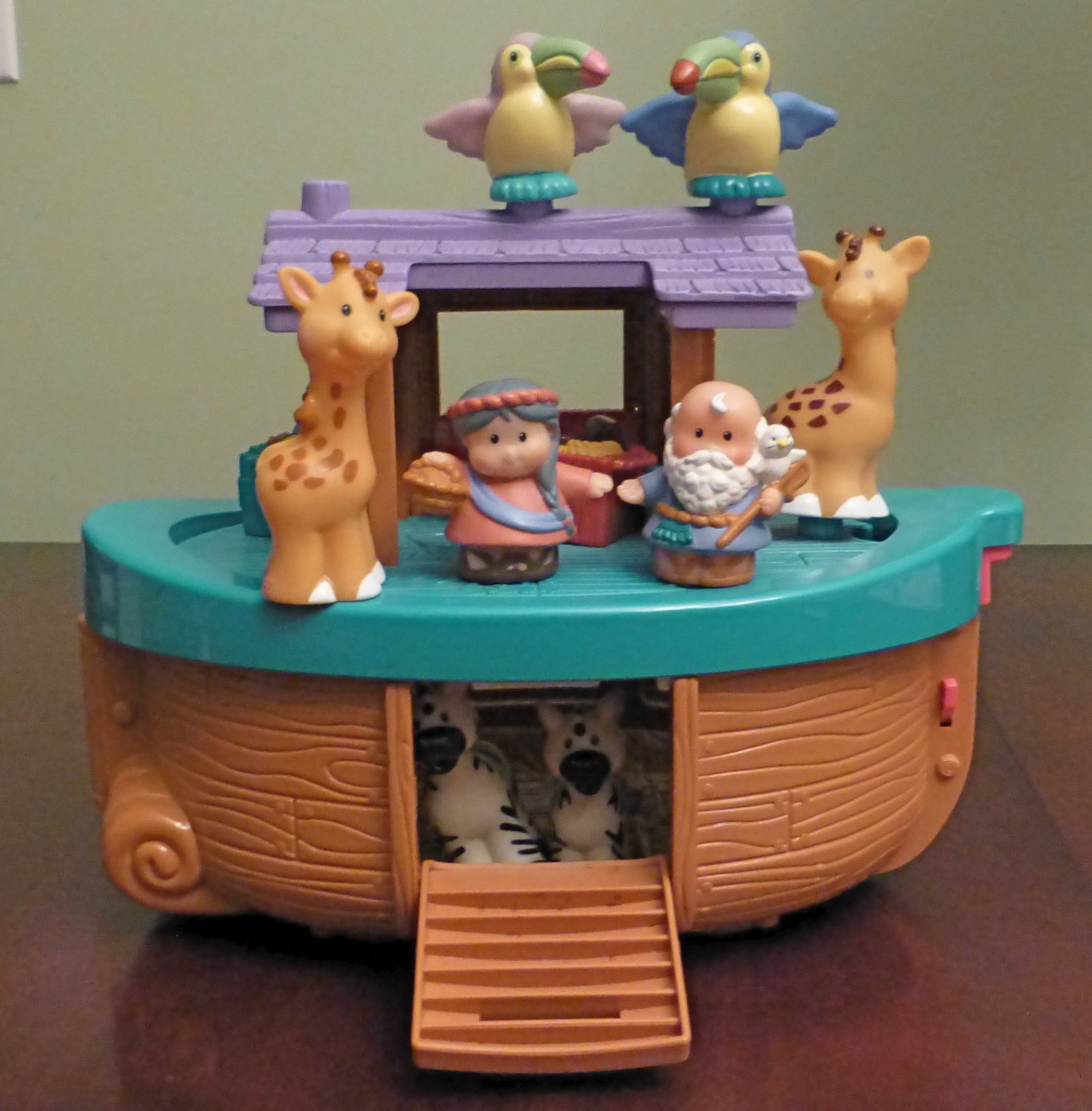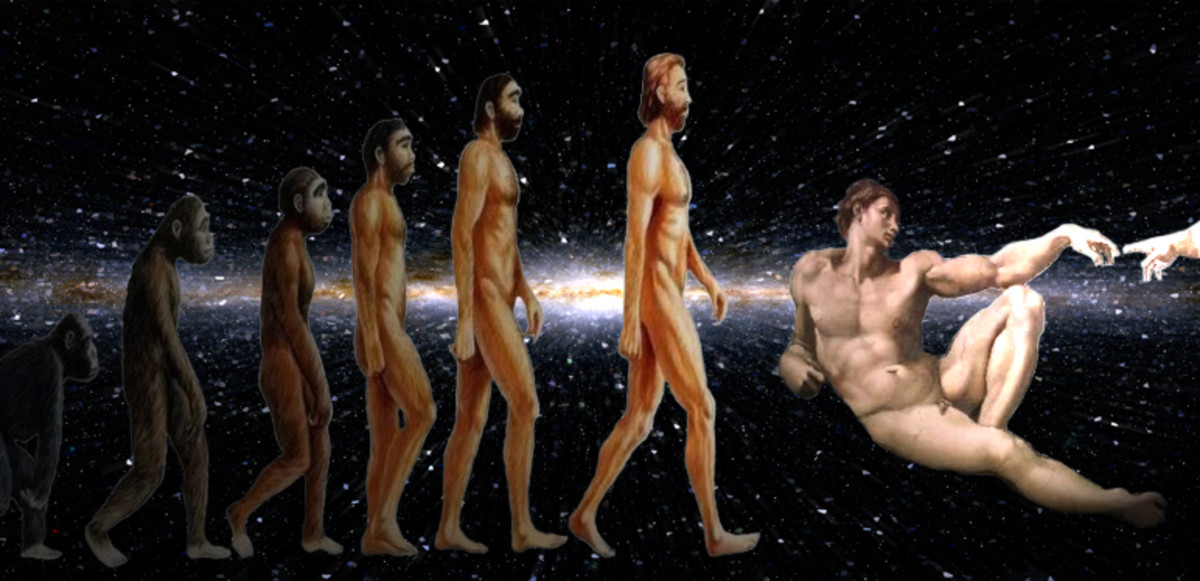Noah's Ark: An Impossible Voyage (Part IV)
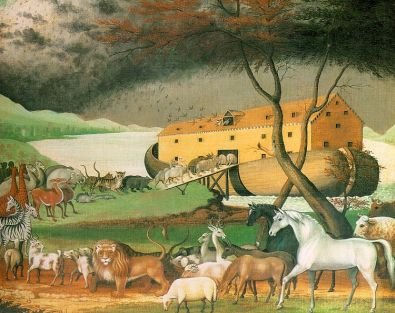
PART IV
So, now that you completely failed to demonstrate anything at all about how they got to the Ark, let me tell you what your more pressing problem is: Different Freaking Continents! Most apologists are either completely unaware, or else desperately trying to avoid at all costs – the issue of how animals that are indigenous to very specific locations around the globe managed to cross thousands of miles of oceans to get to Noah and back. Some apologists will quickly reply that at one point all the continents were joined into one giant landmass - called Pangaea in geologist circles - so, problem solved (oh, except for the fact that geologists think this was like a whole bunch of hundreds of millions of years ago, but whatever). No trans-Atlantic bison migration needed! Of course, other apologists will say that Continental Drift is bogus science - like radiocarbon dating, dinosaur bones, and whatever the hell Law of Nature claims donkeys and snakes can’t talk – so we’ll make provisions for them too.
To incorporate a tiny fragment of childhood nostalgia, let’s treat this exercise like a Choose Your Own Adventure book. If you believe that Continental Drift is all hooey – that the continents aren’t moving, and have always been right where they are now, turn to page 46…I mean proceed down to #1. If you belong to the party that acknowledges Continental Drift is a real phenomenon and not some hoax conjured up by crop circle enthusiasts or the guys who framed Pete Rose, skip down to #2.
#1. If you deny Continental Drift exists, and the continents have always been in the same spot, how did all of the animals not living on the Middle East landmass get to Noah and then back to their rainforests and/or Antarctic glaciers? Think about the Giant Sloth that’s indigenous to Australia, and is capable of moving nearly as fast as the plants it eats. The thing is so freaking slow God named an entire sin after it, for cryin’ out loud!! Now rack your brains and try to come up with a coherent explanation or two that account for this dilemma.
#2. If you accept Continental Drift as a real thing because you did not learn science in a mud hut while your cannibal neighbors were busy shooting poison blow darts at your head, you have 3 options to choose from:
A) Continental Drift started before Noah’s Flood
B) Continental Drift started sometime after Noah’s Flood
C) Continental Drift started during Noah’s Flood, and was in fact caused by it
Since the Great Deluge could legitimately be called a trial or tribulation of sorts, we will dub these options “pre-Trib,” “post-Trib,” and “mid-Trib,” respectively. Now, here is why you have a massive dilemma on your hands no matter your selection:
A) Pre-Trib: If the continents began drifting apart before the Flood commenced, you’re back to the same problem #1 faces: you have to somehow get animals from continents not touching - and really, really freaking far away - to Noah in the first place. And, oh yeah, then you have to somehow get them back afterward.
B) Post-Trib: If you go this route, you don’t face the problem of getting the animals to Noah or back to their homeland, but don’t breathe a great big sigh of relief over that. Your mission, should you choose to accept it, is figuring out how continents that are moving away from each other at 4 inches per year – which translates to approximately a third of a mile every 5,000 years – somehow managed to travel upwards of several thousand miles in that timeframe. And you don’t get a world-wide catastrophic flood to blame it on.
C) Mid-Trib: If the Flood caused the continents to relocate to their current positions, you don’t face the problem of getting the animals to Noah beforehand, but you now have to find a way to get them back afterward. Now go get started, and may the Force be with you.
How could Noah's family take care of all those animals?
Once aboard, many have suggested that Noah's problems really began, with only 8 people to feed and water, to provide fresh air and sanitation for the huge menagerie of animals for a total of 371 days.
Yep, that sounds like something we’d say…
However, a number…
How many?
…of scientists
Which ones?
…have suggested that the animals may have gone into a type of dormancy. It has been said…
By whom?
…that in nearly all groups of animals…
What the hell is a group of animals? If you take a turkey, a woodchuck, a giraffe, and an emu on a Greyhound bus with you, you’d definitely have a “group” of animals therein. What type of scientific classification is this?
…there is at least an indication of a latent ability to hibernate or aestivate. Perhaps these abilities were supernaturally intensified during this period. With their bodily functions reduced to a minimum, the burden of their care would have been greatly lightened.
And now…I am pleased to present to you: Why This Is Freaking Retarded.
1. It has also “been said by some” (basically every zoologist earning a paycheck) that most animals do not, in fact, do any such thing, that the ones who do are found in extremely cold weather places, and only do it when it’s so cold they can’t find food. So again, how did these creatures get to the Ark situated in a desert in the Middle East, and why would they hibernate in a floating sauna stocked with food?
2. Animals that do hibernate spend as much time as they can before their Big Nap eating as much as possible to store fat. Bears, for example, sleep for 3-4 months at a time, and they lose 25-45% of their bulk during the process. Now, one of the things you may or may not have gleamed from Men’s Health is that, if you really want to pack on the fatty pounds, they don’t recommend manual globetrotting to enhance the endeavor. This tends, more or less, to make you show up for whatever the hell you’re headed to looking like Kate Moss after a stint with the Kenyan national track team. Sitting around getting as fat as possible so as to sleep through a year-long boat trip doesn’t leave a lot of room left for freaking traveling half way around the world to the boat on foot!
3. Say all your animals somehow managed to make their way to the Ark fat enough to hibernate twice as long as usual. That means they wake up after 6 months and need to eat enough food to go back to sleep for another 6. That’s many times the body weight and cubic space for each animal you’ve got, so where are you putting that? And how are Noah and his 7 Dwarves making sure that 16,000 animals get enough of the food that you don’t have any room for?
4. If all the animals are in some magical state of suspended animation, they’re probably laying down. Your sheep-on-a-train scenario only allowed for the room of standing animals. Animals sprawled out all over the place take up more room then you have boat.
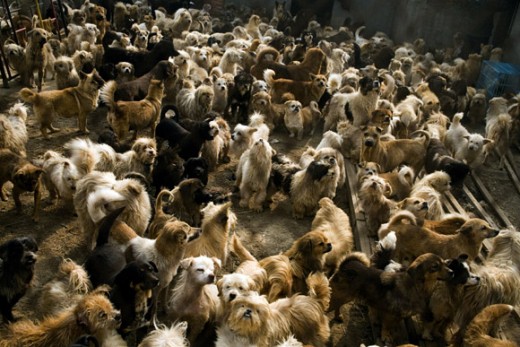
Conclusion
Is that a joke? You can’t possibly be serious! You’re already at your conclusion? You’ve only addressed a miniscule fragment of the problems! How do you sleep at night?
It is evident, when all the facts are examined that there is no scientific evidence that the biblical account of Noah's ark is a myth or fable.
It is also evident that you have no idea what is meant by the phrases, “it is evident,” “evidence,” “all,” “facts,” “scientific,” “scientist,” and “science.” This is the kinda guy who goes into Baskin Robbins, tastes 3 of the flavors, then tells his 6-year old he’s tried them all and thus scientific evidence proves that Moose Tracks is the best.
The facts support the view that Noah's ark was large enough to carry the number of animals required to repopulate the earth after the flood…
…if they’re all crushed in like sardines, hovering in mid-air, with no food or water…well, sure. Seriously, are you allowed out in public without supervision? Yes, the “facts” support the view that possibly 16,000 animals could be jammed onto the Ark for a 30 second photo-op. They most certainly do not suggest you could keep them in there for over a year! Next time you get bored, go try to shove a cat into a shoebox, wrap the box up with masking tape, and then report back to all of us on its condition every week or so.
…and that Noah and his family were capable of caring for the animals during their time on the Ark.
But you didn’t show that Noah and his family were capable of taking care of the animals. You simply acknowledged that they couldn’t, and then declared that they wouldn’t need to because all their pets magically hypnotized themselves!
You have not listed anything that could even liberally be construed as “a bunch of facts,” and nearly every time you did successfully manage to squeak in a close approximation, you still somehow managed to get it wrong. Stating “someone (whose name and job description I can’t be bothered to list) has suggested that maybe every animal can hibernate, or something, and maybe this might have taken place, or whatever,” does not constitute a scientific fact. Well, it may be a fact that someone said it, but that doesn’t make it true, and certainly doesn’t demonstrate that it happened. I just presented some very good scientific evidence as to why the animals weren’t hibernating (read: ‘cause they don’t).
Before you run off and make another asinine statement like, “it is evident, once all the facts are considered…” let me compile a list for your viewing pleasure of issues you never considered, let alone worked out, and “facts” you totally got wrong. Here we go…
1. You never calculated the interior dimensions of the Ark, or the fact that aisles and building materials take up space, which caused you to…
2. …overestimate the available room by about 50%, and thus grossly misinform all your readers as to its capacity. You have way closer to 65,000 sq ft than you do to 100,000 – using magic to build your craft, of course - and that’s with us being undeservedly generous.
3. You never even addressed the issue of animals coming from other continents or returning to them.
4. You totally screwed up the math on the boxcars, which is a Double Whammy because there was no freaking reason to be talking about trains in the first place. If nothing else, this demonstrates your complete and utter inability to fact-check and/or add 2 and 2 together to get 4.
5. You have animals taking up almost 100% of the Ark, and you still haven’t brought any food or water on board, nor accounted for the living space of 8 humans. For some reason, this does not appear to be an issue for you.
6. Seals eat fish. Spiders eat flies. Bears eat campers, or something. You haven’t explained how meat-eating animals were not eating meat on this voyage. (Oh right, lions and tigers and bears were all vegans until after the Flood, despite the fact that God gave them like 6-inch long fangs from the get-go…right?) Wait, that would mean…
7. …that when all the animals disembarked, and the carnivores were finally issued Divine Permission to eat whatever the hell they wanted to (and being ravenous from a theoretical year-long “hibernation” besides), the very first thing they probably commenced to doing was pouncing on whatever other recently-disembarked animals were closest with all the reckless abandon of a bunch of first-graders tossing their papers in the air as the last school bell of the year ushered in summer - effectively sending that species to extinction (and all the ones they ate after that). Why have you never thought of this?
8. What about the non-carnivores? What did they eat after their cruise? Earth is now a soggy, muddy, barren, desolate wasteland, devoid of any and all flora. There are no grasses, grains, berries, fruits, or veggies to munch on. What were all those cows grazing on in their post-Flood mud pit? There are no bananas for our monkeys. There is no eucalyptus for our koalas. There are no Chinese take-out leftovers for our raccoons.
9. Speaking of foliage… What are people and animals breathing after this trip? We get our oxygen from our symbiotic relationship to plants and trees…all of which are now dead and gone. Post-flood earth, as your story has it, probably felt like sucking on a plastic zip-lock bag.
10. What about feeding-time during the voyage? Pandas eat bamboo and pretty much nothing else. Where did you collect all that? How did you plant it back in China afterwards? How did you get those redwoods to spring up in California? Are you telling me that after this fiasco, Noah’s family was just wandering around the globe like Kwai Chang Caine, planting trees like Johnny Appleseed, and hoping for the best?
11. You have somehow forgotten that we generously accepted your lowest possible figure for the number of animals on board, and that by “padding that statistic for error,” or, “allowing for now-extinct species” (and aisles!), and including all those animals that actually would have to come on the Ark – even though you claimed they wouldn’t - your boat is no longer big enough by a long shot.
12. You have apparently ignored (or never thought of) the physical conditions aboard the Ark. Remember, this is before electricity. Which means there are no lights, no air-conditioning, no plumbing, no ventilation. If you want to know what this probably felt like, go hang out in a pitch black attic - filled with feces, in the middle of July - with a hoard of panicked woodland creatures for company, and see how long you can wait it out before you puke on your shoes, pass out from heat exhaustion, or get mauled by some terrified squirrels. And when you come back down in 11 minutes, try to explain how the penguins were coping with this.
13. It’s also pitch-black. Nobody could see anything unless they had lanterns all over the place, which was probably a horrible idea in a giant wooden crate stuffed with hay, covered in pitch, and being tossed around like a shoebox in a tsunami. So re-emerging into sunlight for the first time in over a year probably blinded just about everyone involved.
14. Operating under perfectly ideal condition: proper climate, regular feeding times, knowledgeable veterinary staff on-call 24/7, zoos still lose animals on a pretty regular basis. Yet for some bizarre reason, you think you can take 2 of every animal from every imaginable climate on the planet, shove them into a pitch-black warehouse heated to about 130 degrees, shake the whole thing like a blender for a year, and suffer no casualties whatsoever? What drugs are you freaking smoking, and where can I find some?
15. Speaking of shaking…if you really want to contemplate the effects of this carnival ride from hell, go rent Jackass: The Movie, then wait for the scene when like 12 dudes on roller skates get in the back of a U-haul in a parking lot while the driver randomly slams on the gas and brakes. Your end results are pretty much a trifecta of broken limbs, concussions, and vomit. This was not a trip down the Lazy River in an inner tube, it was Mr. Toad’s Wild Ride on steroids and hallucinogens. Too bad your loving heavenly Father just murdered all the veterinarians!
16. You’ve never addressed the issue of animals like rabbits, mice, rats, just about all insects, etc. multiplying at an exponential rate. So you start out with 2 rabbits. You end up with about 6 billion by the end of your trip. Seriously, guys…if for some random, cosmic twist of fate we ever end up going on vacation together, please, dear God, please, let someone else do the planning. You suck.
17. You need to at least pay some lip-service to the Documentary Hypothesis (DH) and how this theory relates to the narrative structure of Genesis’ divergent accounts. Contrary to traditional Christian doctrine, the DH contends that the Pentateuch was not written by Moses, but by 5 different, unknown authors. This stems from the observation that there are 5 distinct literary voices used throughout the first 5 books of the Bible, “signatures,” if you will, and is a bit of the same conclusion we would draw if we looked at a sheet of paper that 5 different people had transcribed on: sure, you could harbor the belief that a single person wrote 5 different ways; but it makes a lot more sense to think there were multiple people involved.
This seems particularly evident and relevant in the Genesis Flood Tale both because it gives the number of animals 3 different times (changing each time it is repeated), and because it has a glaringly anachronistic element: that of clean animals.
Genesis 6 states that God told Noah to bring on 2 of every living thing, and that Noah did so, and then the story wraps up and ends conclusively. And then it starts from scratch and tries to tell the same story all over again in chapter 7 for no apparent reason whatsoever, except this time Noah is told to bring either 7 or 14 of the “clean” animals, and just 2 of everything else. Then a few verses later it says how many of each thing Noah actually took on the Ark, and just says 2 of each. So, first we’re told 2, then we’re told “sevens” (is that 7 animals or 7 pairs?), then we’re told 2 again. The anachronistic point is that God never told anyone what a “clean animal” was until the Mosaic Code following the Exodus, like a thousand years later. A “clean” animal was one that was okay to eat, but Genesis states that people weren’t given divine permission to eat animals until after the Flood, so what the hell did Noah think a “clean animal” was? This entire concept doesn’t belong in the story. It’s like seeing a painting of 15th century Plymouth Rock with a phone booth and a fire hydrant in the middle of the town square, or watching a video of Iranian mulahs’ reflect on their fond memories of women’s rights and capitalism. It don’t fit. It suggests that whoever penned this story just inserted stuff from his era without ever stopping to contemplate whether or not it actually existed in the era he’s describing. Another strike against divine guidance.
18. There are parts of this story that don’t make any logical sense, like:
(A): how the Ark started and ended up in basically the same spot. Go take a canoe out to the lake on a pleasant afternoon, toss it in the water, leave for an hour, and then go try to find it, probably on the other side of the lake. Throw in an epic storm, and world-wide flood, a year’s worth of wind and crashing waves, and think just for a second if it’s not somewhat more reasonable to expect that the Ark would’ve actually finally docked somewhere near Boise, Idaho. Oh, but I’m sure God magically steered it, right? After He finally “remembered” that He left them floating there like 6 months after the rains ceased?
(B): the entire denouement of the story where Noah finally opens the window and starts playing fetch with his birdies. The story tells us that the tops of all the mountains (particularly the one they just crashed into) were all visible, yet the birds couldn’t locate any dry land to perch on. That doesn’t make any sense. The story also tells us that Noah’s decision to finally disembark came when a dove failed to return to the ship. This doesn’t make any sense either. Just because a bird found a treetop to nest in 6 miles beyond the horizon doesn’t necessarily mean it’s safe for the entire cast of The Lion King to go blindly stampeding off the gangplank into the sunlight. Any ship captain not recently kicked in the head by a horse - who had just plowed into a freaking mountain range in his boat, and who wanted to know whether it was safe or not to the unload the cargo - could just look over the side of the ship to see if he was sitting on dry land or not.
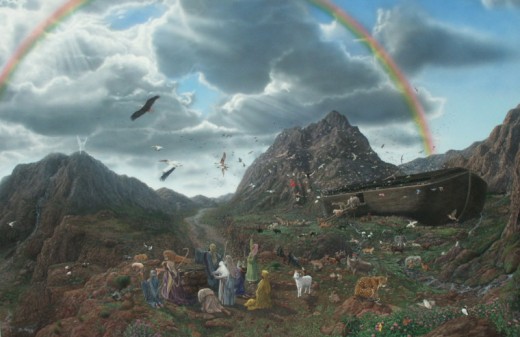
(C): The story tells us that God wrapped up this disaster with a rainbow and a speech about how from now on no one was going to live past the age of 120. He apparently immediately forgets He said this and goes right on letting people live to be however the hell old they wanted to be until sometime around Moses. Even in modern times people occasionally outlive that mark. That stupid, pointless mark. I guess God thought wickedness and evil are bi-products of age and wisdom. Thankfully, we no longer have to fear rapes and car-jackings by the local nursery-home residents in their menacing motorized wheelchairs! Good one, God! You sure showed us! Seriously, if I really wanted to eradicate violence (mankind’s only crime according to Genesis), I would probably try to invent some kind of rule like: “From now on, no one shall be born until they’re 120!”


